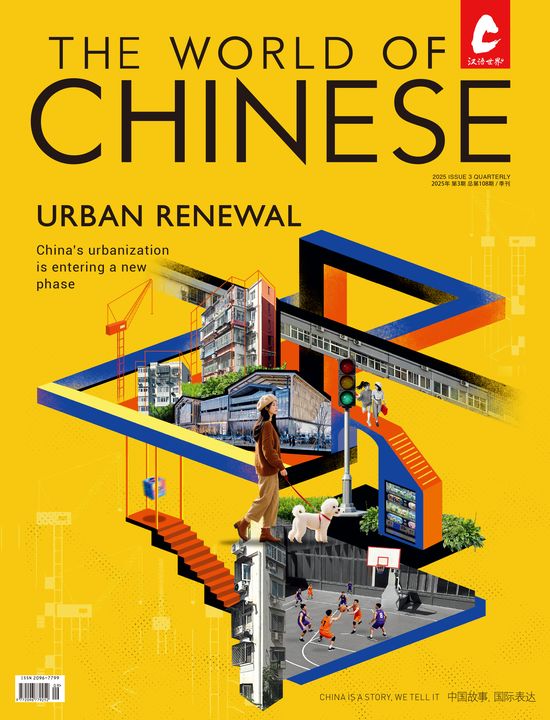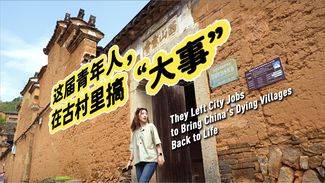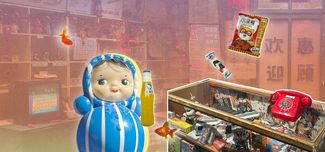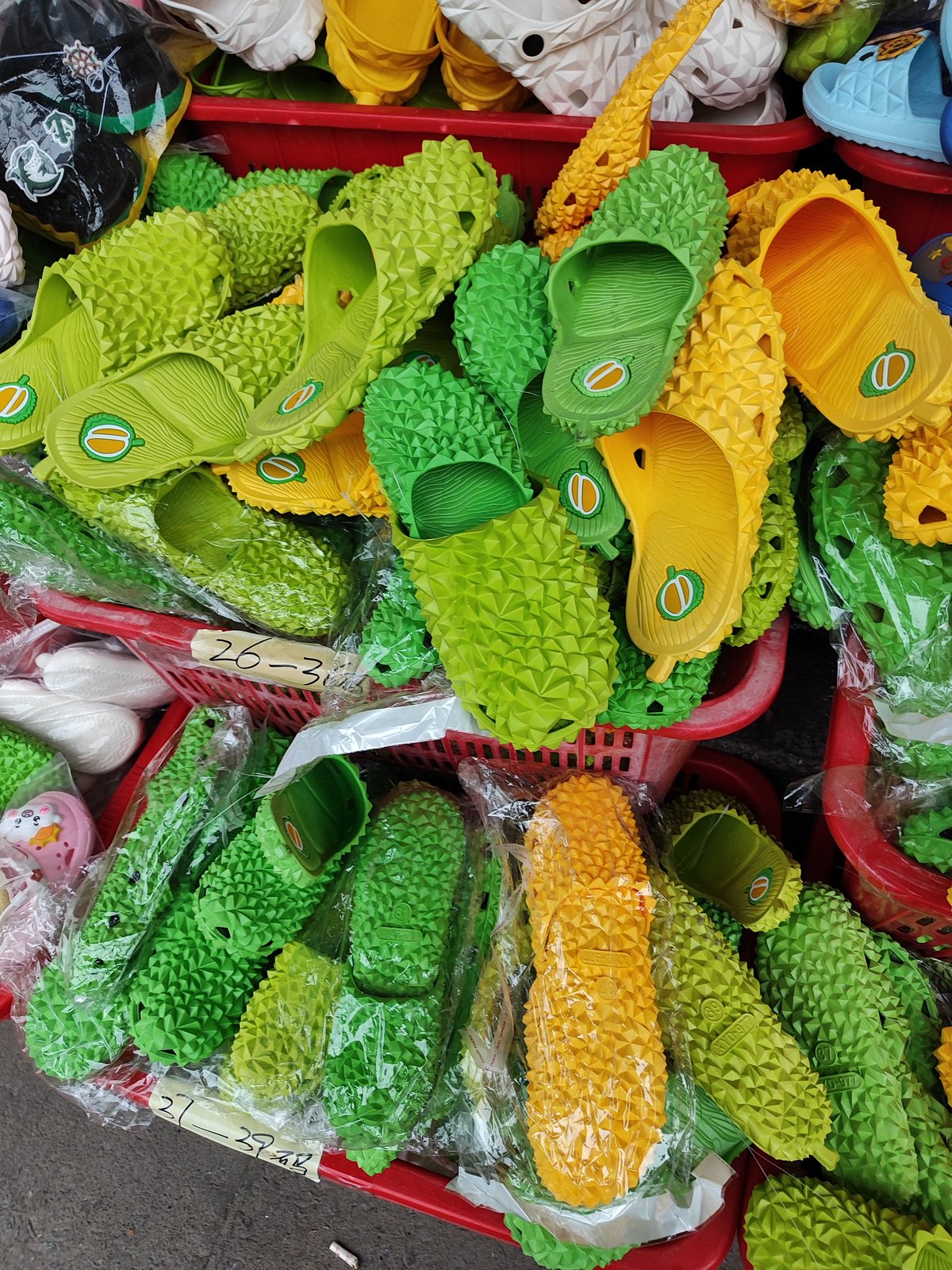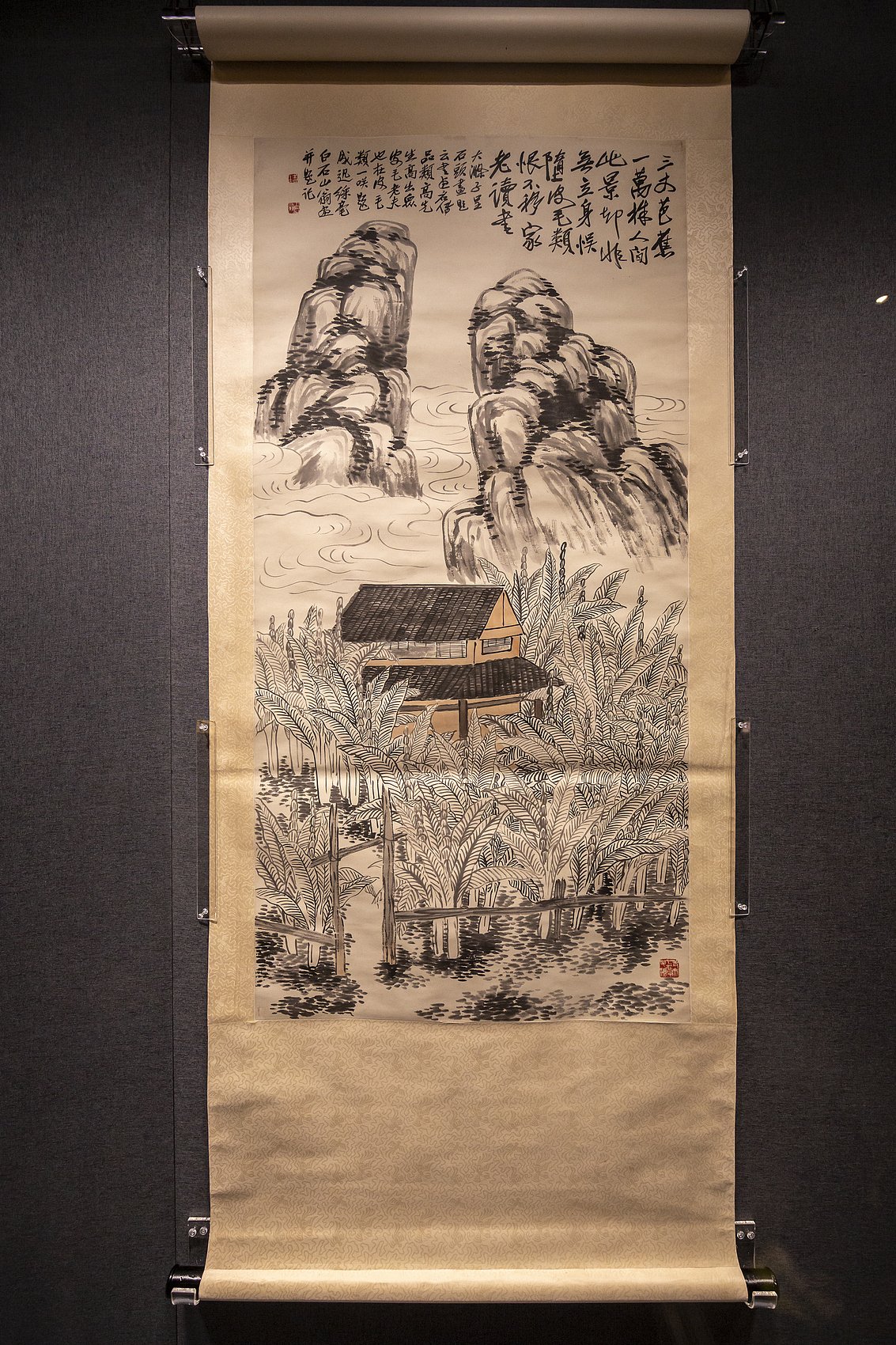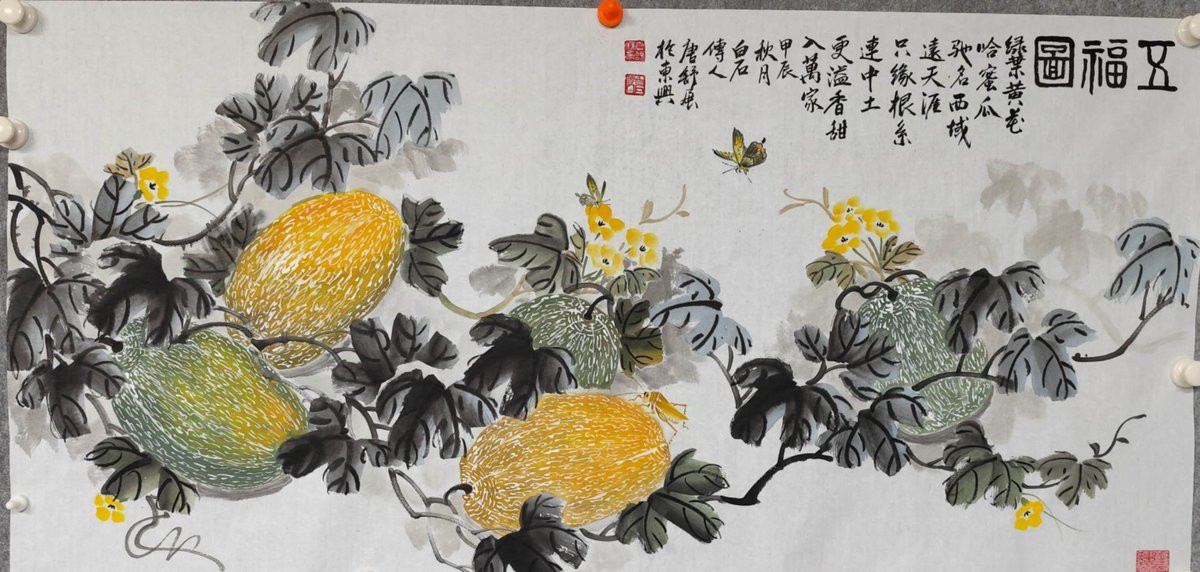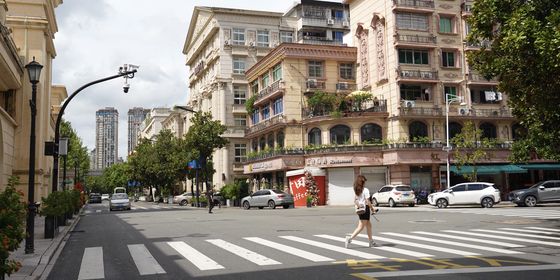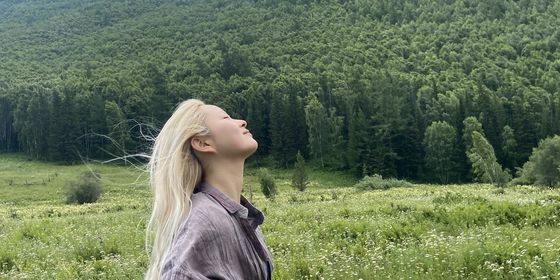Discover the overlooked history of overseas Chinese, vibrant colonial architecture, and the surprising presence of Qi Baishi’s legacy in this small but lively border city
Shouts for Vietnamese coffee topped with salted ice cream ring out along Hedi Road, where women in bamboo hats ladle out drinks from roadside makeshift stalls. I soon arrive at my destination, Saigon Cafe, decorated with light yellow walls, mint green blinds, and scenes from the 1992 French film L’amant painted on the terrace. As I ascend to the 2nd floor, I savor my slow-dripping coffee, relishing its rich sweetness, and gaze out over the Vietnamese countryside across the Beilun River. But on this side of the river, despite the Vietnamese architecture and coffee, I am not in Vietnam. I am in Dongxing, China, the country’s only border city with Vietnam that is connected by both land and water. Sitting at the southwesternmost end of China’s mainland coastline, the city is full of cross-cultural connections that enchant visitors with surprises around every corner.
Sitting at the southern tip of Guangxi and carrying the nickname of China’s Gate (国门), Dongxing’s history as a border town stretches back 1,500 years. During the Qing dynasty, more than 30 boundary stones were erected to demarcate the border between China and Vietnam in Guangxi, eight of which are located in Dongxing. One stone stands right in front of the Saigon cafè, now protected with glass.
Read more about the cultural exchange between China and Vietnam:
- Understanding Beyond Language: A Chinese Traveler in Vietnam
- On the Tracks of the Yunnan-Vietnam Railway
- Remembering the Deadliest Bridge on the Yunnan-Vietnam Railway
In more recent history, the city sat on the front line of China’s 1979 Counterattack in Self-Defense on the Sino-Vietnamese Border, and Dongxing remains a living museum of that tumultuous period. Cafès occupy what were once bomb shelters, and shops are decorated with military kettles and grenade cases leftover from the war. In front of a forest near the city center, a skull sign stops me, reading “Minefields. No entry.” These days, the sign serves more as a selfie spot for tourists than as an actual warning.
My next stop, the memorial for qiaopi (侨批), the remittance letters that overseas Chinese sent back to their families, offers more context for the city’s turbulent history. Since the Ming dynasty, coastal Chinese have ventured overseas for trading and other business opportunities. They used qiaopi to send home both their hard-earned savings and the sentiments they couldn’t express in person. According to the memorial, the sending of these letters through Dongxing peaked in the 1930s and 40s. After the ports in Guangdong’s Shantou and Hong Kong fell under Japanese control in 1939 and 1941, qiaopi operators used Dongxing as a hub to establish a secret 3,000-kilometer route that crossed active war zones. This lifeline, known as the “Dongxing Post Road (东兴汇路),” allowed letters, money, and essential supplies to continue reaching millions of families in Guangdong and Fujian.
Today, Dongxing may no longer hold the same weight in international trade, but the small city of 220,000 people still thrives as a lively center for border commerce. During peak travel season, over 26,000 people cross the Beilun River bridge, which connects Dongxing and the Vietnamese city of Mong Cai, every day. Vendors on the Dongxing side sell everything from Miss Saigon perfume to herbal balm, instant Pho noodles, and coffee packs. And almost every coffee stall has an avocado stand beside it. “No need to add water—it’s naturally green and creamy,” one vendor tells me, explaining how Vietnamese avocados are perfect for milkshakes. Trucks piled high with tropical fruit rumble through the city each day. According to Guangxi Daily, 22,000 tons of tropical fruits—including durian, passion fruit, and dragon fruit—were imported through Dongxing from January to April 2025.
Even the footwear has a local flavor. A popular souvenir from Dongxing is rubber slippers whose soles are molded into the spiky skin of a durian. “If someone annoys you, you can give him a kick with these slippers,” the vendor jokes.
Dongxing’s street food also has a distinctly Vietnamese flair, from grilled pork wrapped in rice noodle sheets to banh mi sandwiches and even some more adventurous delicacies.
“I get fresh duck eggs and hatch them for 15 days,” a woman in a bamboo hat explains as she takes out a red stool and invites me to sit around her stall selling qutou (屈头) eggs. Literally meaning “head-bending,” the term refers to the curled position of the embryo inside the shell when it’s partially hatched. The dish doesn’t require any special cooking: simply boil the egg, and consume the liquid and meat inside. Originating from Vietnam, qutou eggs have become a staple in Dongxing’s food market. “If you don’t try these, you never really came to Dongxing,” the woman insists.
In Vietnam, people prefer its original flavor, and only need simple ginger, salt, and pepper for seasoning. But here, the eggs have a Guangxi twist. The stall owner adds radish slices, shredded ginger, mint leaves, and purple shiso to the bowl. Then she drenches everything with green lemon juice. While the dish may not be for the culinaryly squeamish, it is actually quite refreshing.
By afternoon, a light drizzle begins—hardly unusual in the city’s subtropical monsoon climate. Following the lead of locals and tourists alike, I take shelter under the high-ceilinged arcade of the city’s signature qilou (骑楼, literally “riding on the building”). Common in southern China and Southeast Asia, these buildings blend Chinese and European colonial styles, with a shop or business on the ground floor and living quarters above. The ground floor facing the street forms a covered walkway for pedestrians and vendors to display their goods, while the upper floor extends over it, as if “riding” on the first floor.
Architecture in southern China traditionally favors a subtle black-and-white palette, particularly the Huizhou style of Anhui and Jiangsu provinces, reminiscent of ink brush paintings. But here in Dongxing, bursts of yellow, pink, green, and blue surround me. I notice French arches and carved railings on the qilou balconies. As vendors unfurl an orange canopy, rain cascades down like a curtain. Instead of an ink-brush scroll, the qilou in the rain feels like vivid watercolors infused with global influences.
On my way back to the hotel, I walk past a hill surrounded by lush banana trees, with a sign that reads “Baishi Banana House.” I’m surprised to learn that the famous painting “Banana House (《芭蕉书屋图》)” by Qi Baishi (齐白石), one of the greatest Chinese painters of the 20th century, was inspired by the endless stretches of green banana trees here in Dongxing. Qi stayed in the border city in 1907 and 1909, leaving behind hundreds of paintings and carved seals.
In 2019, the Dongxing government rebuilt the small house from the painting on the same slope that Qi once visited, complete with white walls, black tiles, and wood-carved windows. Next door, the Qi Baishi Culture and Art Museum, which opened last December, displays more than 80 calligraphy and painting pieces, rubbings of representative works from various periods of Qi’s career, alongside valuable archival materials.
On this rainy Monday afternoon, however, the door is closed. Just as I turn to walk down the hill, a lady emerges seemingly out of the banana trees.
“I am Tang Shuzhan, the fourth-generation successor of the Qi Baishi style,” she says. “Since you walked up the hill on this rainy day, it is yuanfen (缘分, fate). Let me show you inside.” She takes out the key and opens the door.
It is a simple room with a desk, some brushes, a bike, and a bed inside. “Qi learned to cycle in Dongxing, and he crossed the bridge to visit Vietnam,” she explains. “This iron bed is from Vietnam, with some French elements.”
“Qi painted that quail in Dongxing,” she says, pointing to a painting. “But that Hami melon was painted by me,” she adds with a giggle. Growing up in Xinjiang, where the abundant sunshine makes Hami melons especially sweet, she explains that drawing them reminds her of the sweetness in life. Now in her 60s, Tang had studied under Qi Youlai, the grandson of Qi Baishi, and her technique closely echoes the master’s.
“Why did you come to Dongxing?” I ask her.
“I followed Qi’s footsteps here in 2018, and I have stayed here ever since. The winter is warm and there is plenty of rain and fruit,” she smiles. Besides the banana house, she also runs an art classroom here to teach Qi-style painting. From wild lychees to river shrimps, the nature and life in Dongxing have provided Tang and her students with unlimited inspiration.
As I follow her into the backyard, a hidden orchard opens up—mango trees, longan trees, and more. It’s my first time seeing green carambolas on the branch, dotted with small pink flowers. She grabs a long, forked pole and pokes at the tree, trying to knock down a few carambolas as a souvenir for me.
“I paint them as well,” she laughs.
As I bid farewell to Tang and make my way down the hill, my pockets bulge with carambolas, and my mind buzzes with the day’s discoveries. Dongxing, a small city at the crossroads of China and Vietnam, feels like a magical gateway where history, culture, and unexpected delights collide. Perhaps one day I’ll return and join Tang’s art class, hoping to capture a little of Dongxing’s magic with a brush.
